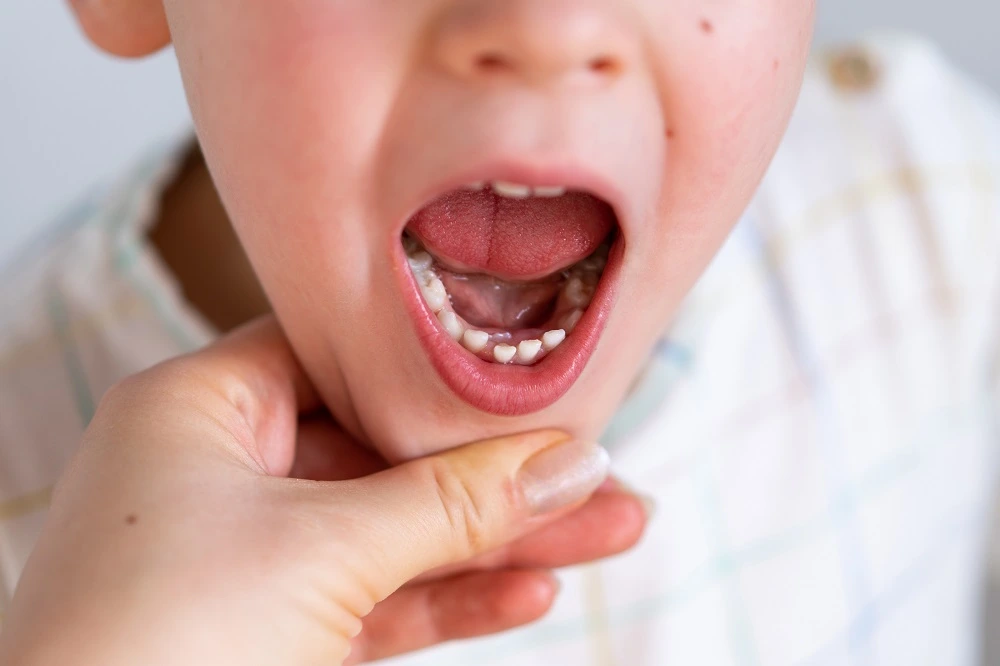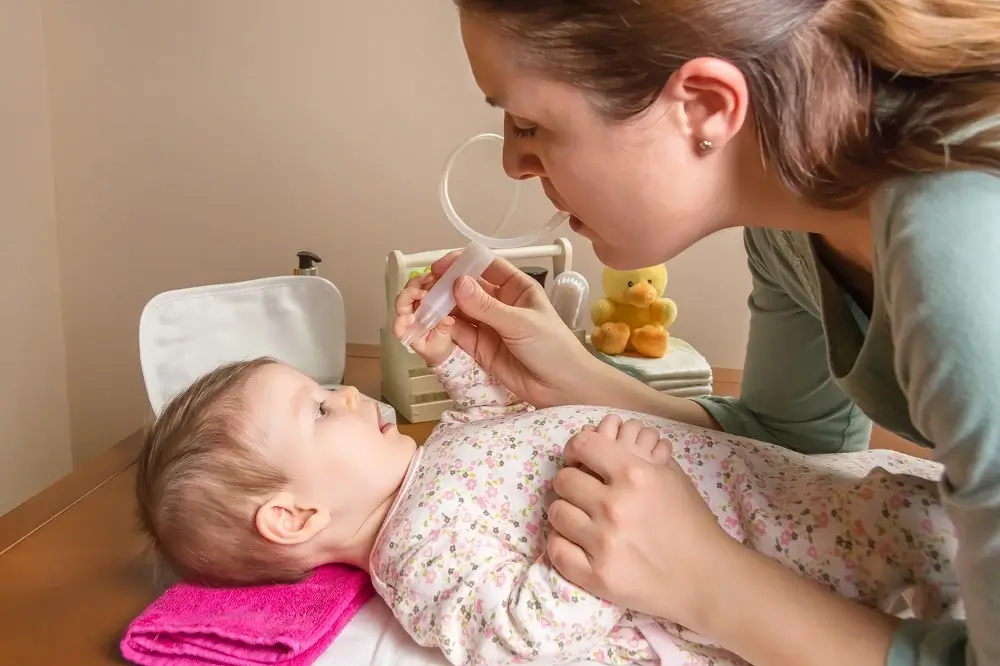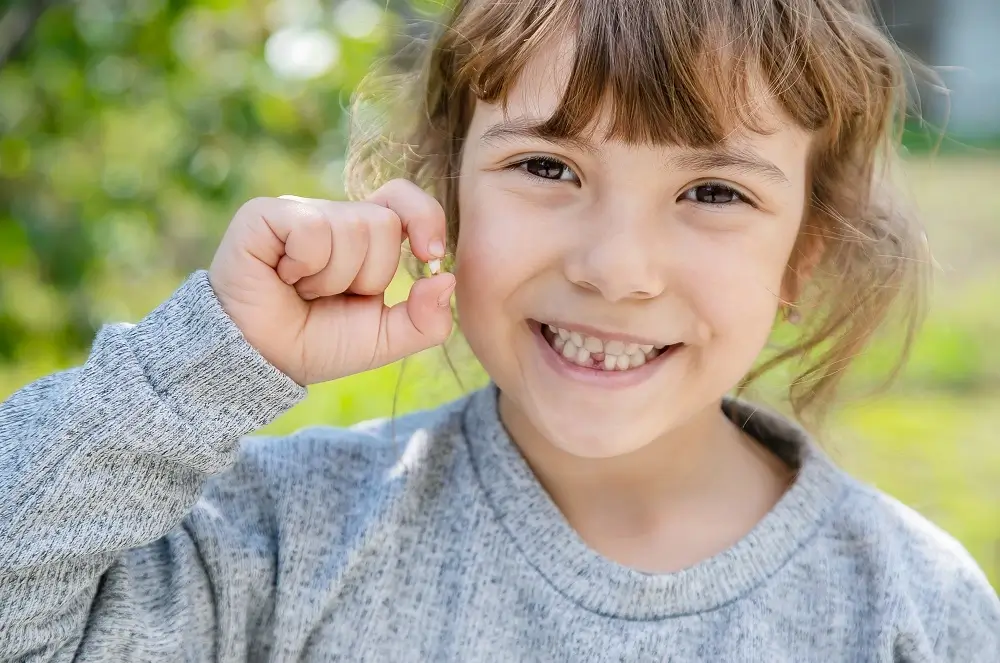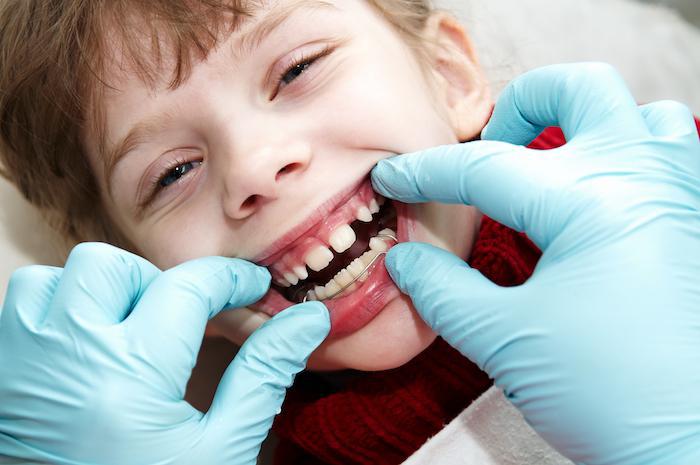Last Updated on: 23rd July 2024, 07:44 am
What to do when your child loses a tooth? Every milestone in your child’s life is a cause for celebration. Be it their first step, first word, or the eruption of their first tooth in the oral cavity and the first visit from the tooth fairy. When you become a parent, you are constantly confirming that your little one meets all the popular milestones on time.
Table of Contents
ToggleWhen do baby teeth come in and out

Your child’s first set of teeth is called milk or baby teeth. The first tooth usually appears when the baby is about 6-7 months old. By the time your kid reaches their third birthday, they have the complete set of milk teeth in order and working. In a few short years, that is around the age of 6-7 years the buds of permanent teeth start appearing in the oral cavity and the visits from the tooth fairy started.
Always keep in mind there is no exact age to pin the appearance and fall of milk and permanent teeth. Some kids are early and others a little late. In the beginning, it could be unsettling for the child to lose their milk teeth as they have become habitual to that appearance. By the age of 6-7 years, kids are mature enough to understand the importance of permanent teeth but may need reassurance.
Why do we have two sets of teeth? (Importance of milk teeth)

Every parent has to go through the dreadful period of their child’s teething and is delighted when it’s over. Most parents believe that milk teeth are going to fall out anyway, so why take care of them? Well, it is very important to understand that milk teeth act as placeholders for permanent teeth, help in the development of speech, and let the jaw bone grow to achieve space for permanent teeth. They also help in guiding the permanent teeth in the growing bone.
What to do when your child loses a tooth?
1. Use NSAIDs
When a loose tooth is moved before it is ready to fall out, edema may develop. You can administer a dose of children's ibuprofen to your youngster to lessen inflammation. If the swelling does not go away, you should consult your dentist.2. Clean your child's gums and teeth
 Even before your child's teeth erupt, you should begin teaching them good dental hygiene. Cleaning your gums is one of the key steps to ensuring that you have healthy gums and teeth. The following advice can help you properly clean your child's gums:
Even before your child's teeth erupt, you should begin teaching them good dental hygiene. Cleaning your gums is one of the key steps to ensuring that you have healthy gums and teeth. The following advice can help you properly clean your child's gums:
- Use a clean, damp cloth or gauze: Your child's gums should be gently massaged with a finger wrapped in wet gauze or a damp cloth. This procedure aids in getting rid of any leftover food or microorganisms.
- Try a silicone finger brush: The gums of your youngster can also be cleaned with a silicone finger brush that fits over your finger and has tiny bristles. Brush over their gums lightly after dampening it.
- Avoid using toothpaste: You don't need toothpaste to clean your child's gums. Fluoride, which certain toothpastes contain, can be dangerous if used in large quantities.
- Clean their gums after feedings: Every time your child eats, brush their gums to maintain a healthy and clean mouth.
- Make it a routine: To make gum cleaning a regular part of your child's oral care, establish a regimen. After their morning and evening meals, you might want to consider brushing their teeth.
3. Apply local anesthetic
If your child loses a baby tooth, they may feel some initial pain or discomfort. To help alleviate this, you can use an over-the-counter topical anesthetic, which is a quick and simple solution. However, before applying any anesthetic ointment, make sure to clean the area and wait for the bleeding to stop.What to expect and tips to take care

First, the most important thing to remember is no kid follows an exact timeline for eruption and falling out. Early teethers tend to lose their baby teeth early. Usually, kids start losing their teeth around 6-7 years of age and it takes a few months from the time a tooth starts to become loose until it falls out.
Secondly, teething is a natural process and when a tooth falls out it’s natural for some bleeding to happen. Be calm and reassure your kid, rinsing with warm water and cleaning the area with a warm washcloth could help to speed the process of healing.
Some kids tend to brush hard, which can cause pain and discomfort. Make sure they don’t put much pressure on the area of the lost tooth for a few days. Usually, milk teeth fall on their own, but if it’s wobbly and bothering your kid it is better to visit your dentist rather than yanking out a reluctant tooth before its time.
Always keep in mind, it is natural for kids to lose milk teeth. It could be embarrassing for some kids to have gaps in their teeth. Be calm and reassure your kid that it’s a natural process and new teeth are on their way.
Conclusion
It could be difficult for first-time parents to see their kids going through pain and discomfort. Celebrate the fall of each tooth and make them understand the importance of proper dental care habits. At Channel Islands Family Dental in Oxnard, we are happy to help and guide your little ones. Contact us today to book your appointments.



